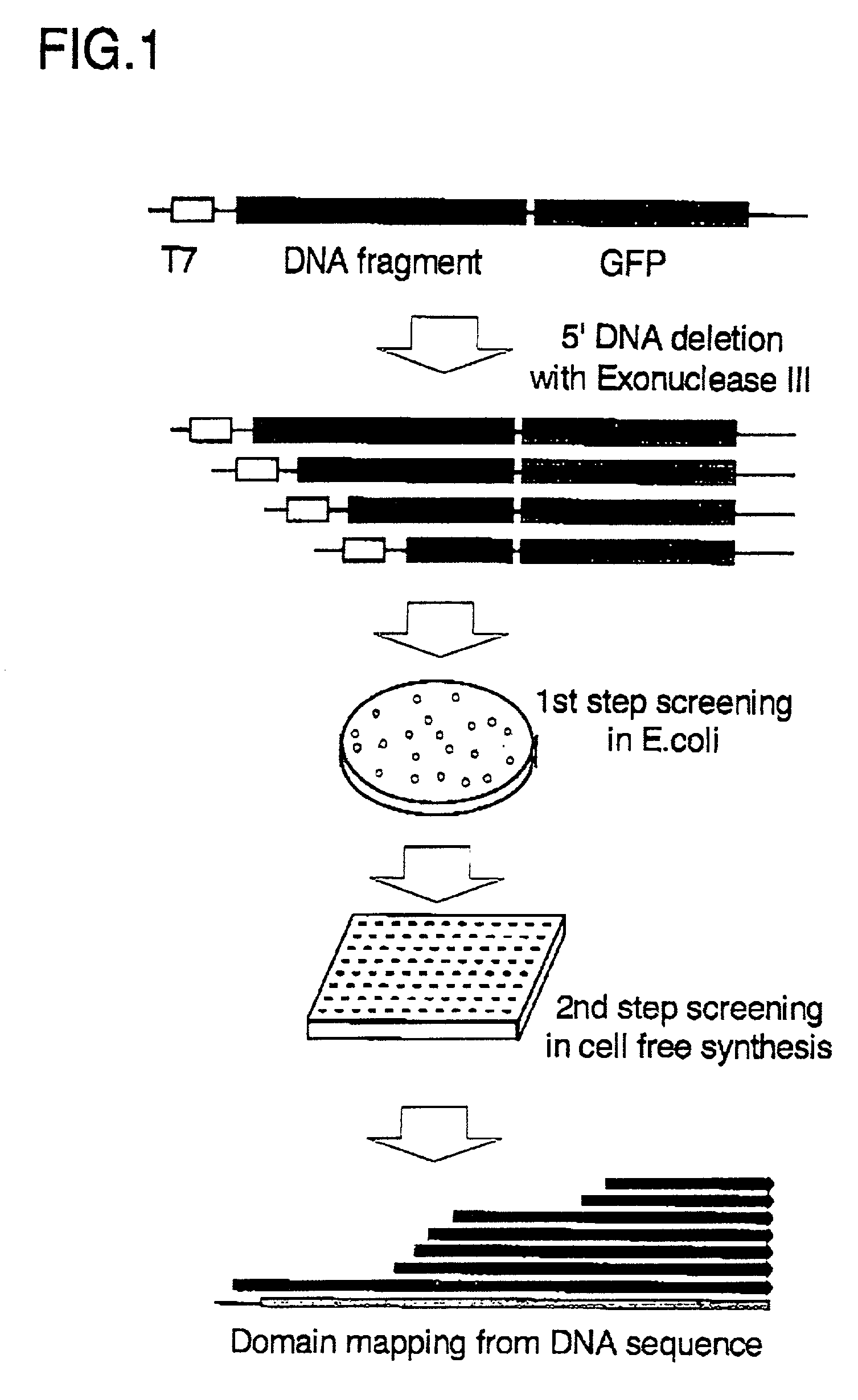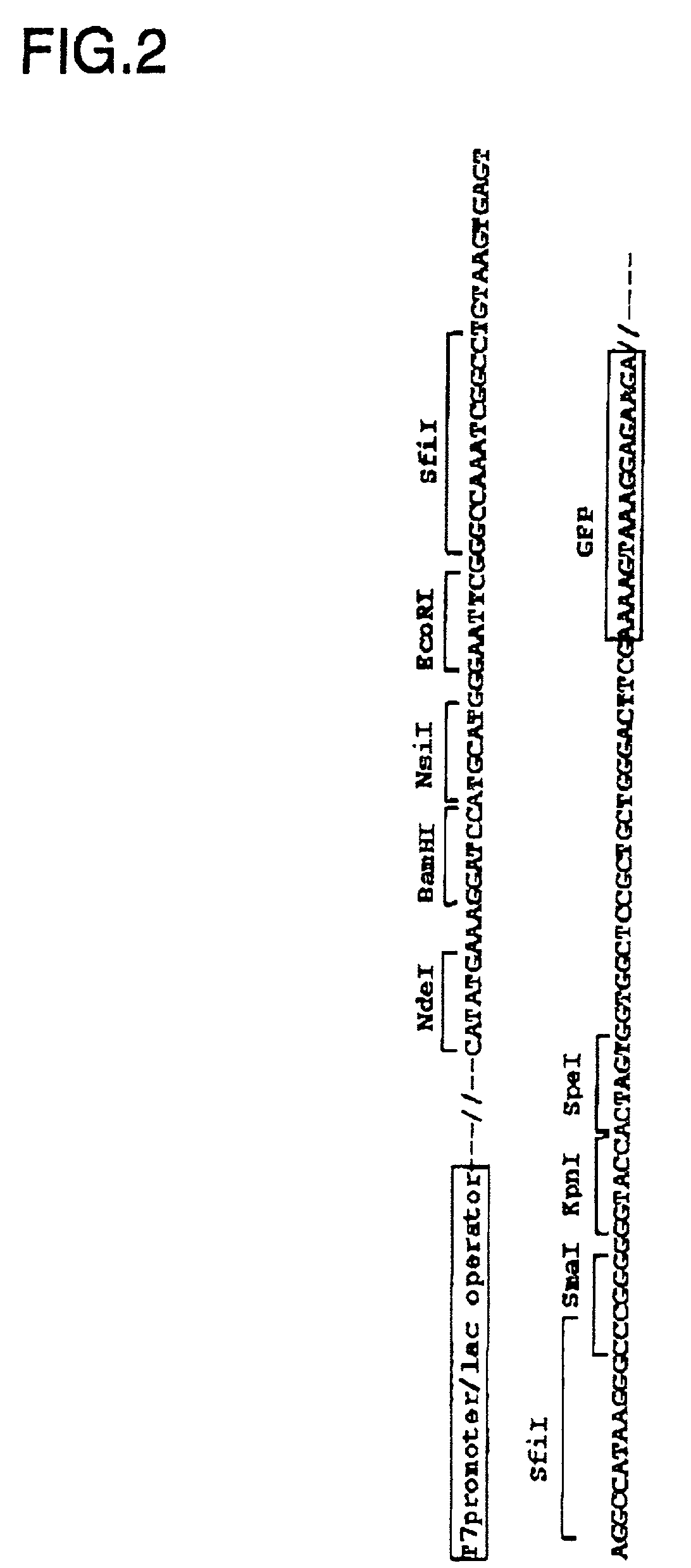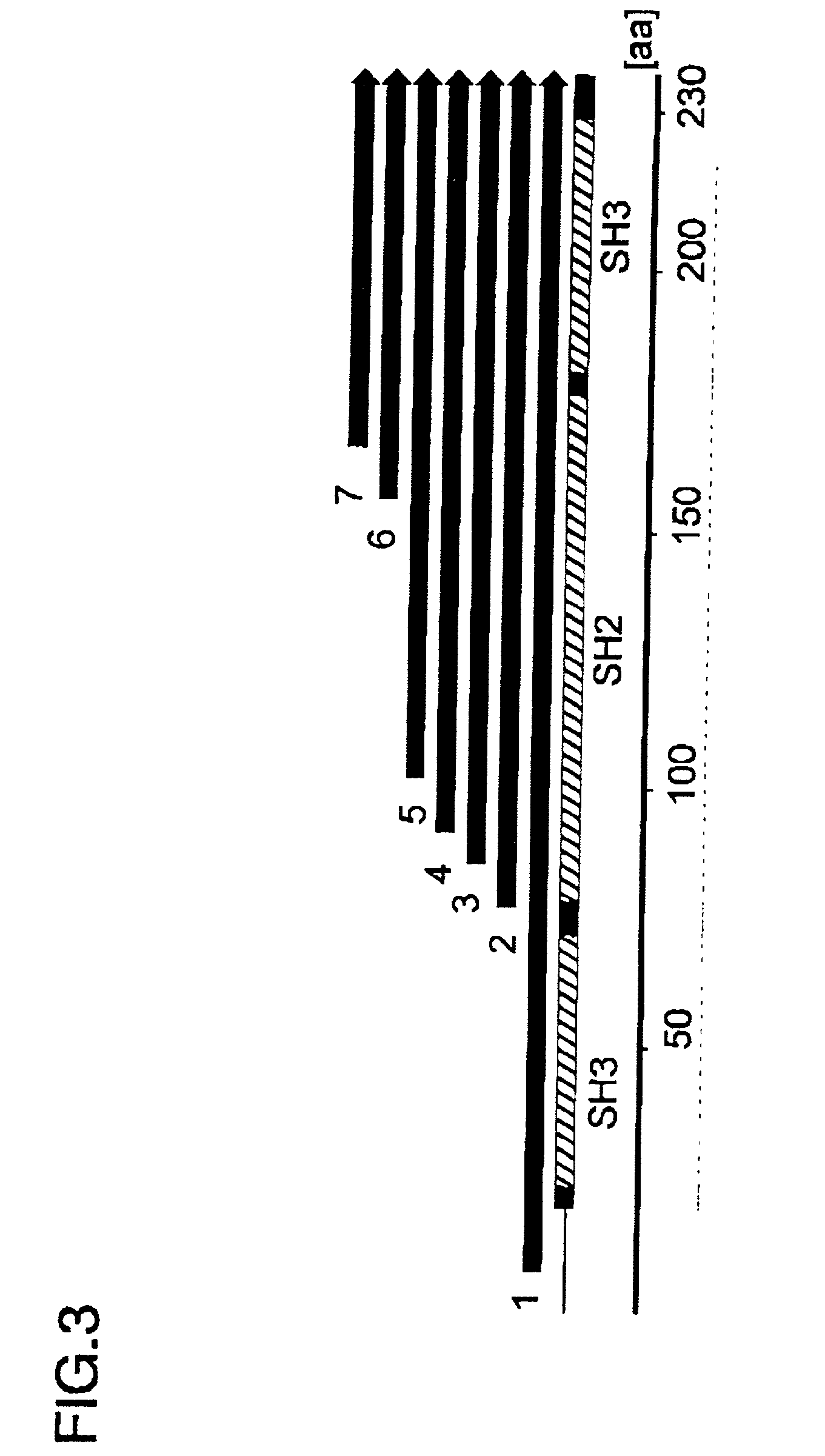Methods for producing protein domains and analyzing three dimensional structures of proteins by using said domains
a technology of three-dimensional structure and protein, which is applied in the field of producing protein domains and analyzing three-dimensional structure of proteins by using said domains, can solve the problems of difficult to obtain proteins which are toxic to host cells and/or degrade easily, difficult to obtain proteins, and difficult to maintain the integrity of three-dimensional structure and functions in vivo. achieve the effect of rapid and easy method
- Summary
- Abstract
- Description
- Claims
- Application Information
AI Technical Summary
Benefits of technology
Problems solved by technology
Method used
Image
Examples
example 1
Construction of Plasmids and Introduction of Mutations
[0060] pGFPuv (Clontech), used as the reporter gene, was mutated at three sites using a site-directed mutagenesis kit (Stratagene). Replacement of phenylalanine at the 64.sup.th residue to leucine (F64L) and serine at the 65.sup.th residue to threonine (S65T) are the mutations to obtain red-shifted excitation peak and fluorescence about 35 times more intensely than wild type GFP when excited at 488 nm. These mutations also display improved solubility and the more efficient folding of proteins (Cormack, B. P., Valdivia, R. H., Falkow, S., Gene 173, 33-38. (1996)). The other mutation is a silent mutation to terminate the NdeI restriction site.
[0061] To produce GFP-fusion proteins ligated to the C-terminus of proteins coded on the inserted DNA, an expression vector has been constructed comprising a T7 promoter, the DNA insertion site, the mutant GFP gene, and a T7 terminator sequence. One plasmid constructed in this way, pGFPsfiI, h...
example 2
Construction of Deletion Library
[0062] Grb2 cDNA (without stop codon) was ligated to the SfiI site of the plasmid pGFPsfiI in the correct direction and frame to C-terminal GFP. Then, after digesting the N-terminal side of the inserted DNA with EcoRI or a NsiI, the inserted DNA was deleted with Exonuclease III from the 5' end, the region of single stranded DNA was digested with Mung-bean nuclease. Finally, the blunt ends were made using DNA polymerase, Klenow fragment. The lengths of deleted DNA were selected by electrophoresis and the size selected DNA was self-ligated for transformation of E. coli JM109(DE3) strain (Promega) to prepare the deletion library containing Grb2 cDNA.
example 3
Protein Expression
[0063] For the first screening step, the deletion library of GFP-fusion vectors prepared in Example 2 was transformed in JM109(DE3) (Promega) and cultured at 37.degree. C. over night. The fluorescence of the derived colonies was observed by excitation with a Dark Reader (BM Science) at 420-500 nm. When roughly observed with the excitation of the blue light (420-500nm), the obtained colonies could be classified into 3 categories on the basis of fluorescent intensity: strong, medium, and none. Among them, each 8 colonies of those emitting strong fluorescence, those emitting medium fluorescence, and those emitting no fluorescence were selected. And, base sequences of the total 24 clones were determined to identify the deletion sites. Most of the clones emitting strong fluorescence had relatively short (shorter than 35 amino acid residues) protein fragments of Grb2. This result suggests that the folding properness of the short protein fragment, with several tens of ami...
PUM
| Property | Measurement | Unit |
|---|---|---|
| Structure | aaaaa | aaaaa |
| Solubility (mass) | aaaaa | aaaaa |
| Fluorescence | aaaaa | aaaaa |
Abstract
Description
Claims
Application Information
 Login to View More
Login to View More - R&D
- Intellectual Property
- Life Sciences
- Materials
- Tech Scout
- Unparalleled Data Quality
- Higher Quality Content
- 60% Fewer Hallucinations
Browse by: Latest US Patents, China's latest patents, Technical Efficacy Thesaurus, Application Domain, Technology Topic, Popular Technical Reports.
© 2025 PatSnap. All rights reserved.Legal|Privacy policy|Modern Slavery Act Transparency Statement|Sitemap|About US| Contact US: help@patsnap.com



